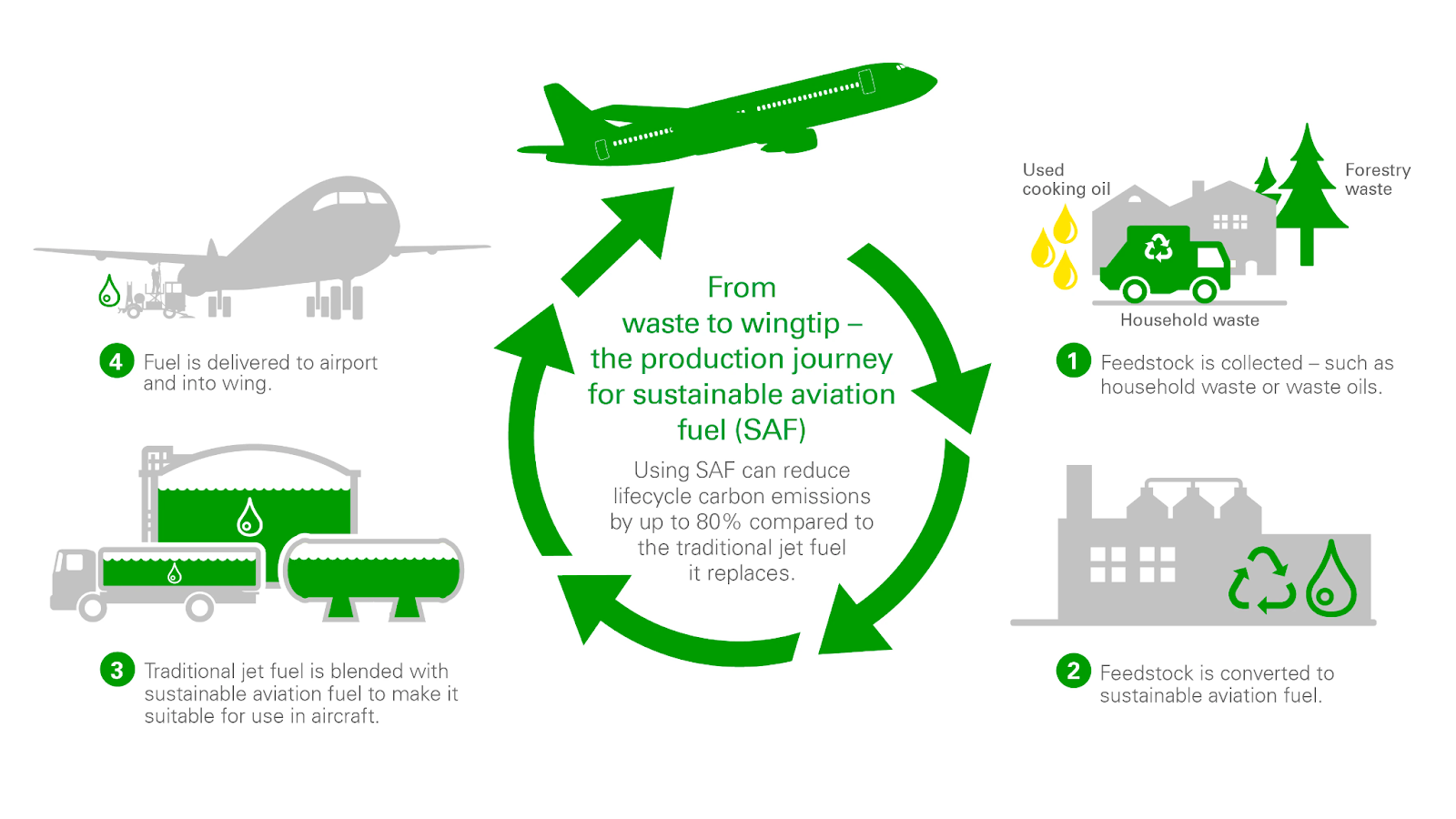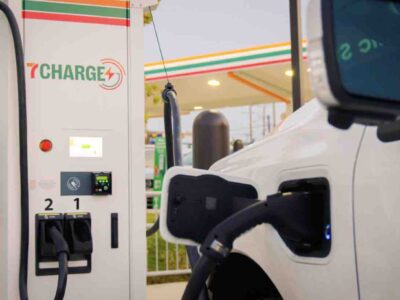The transition from fossil fuels has largely focused on renewable and clean energy sources such as solar, wind, hydro, and battery-powered electricity. Another energy source that can reduce carbon emissions is sustainable aviation fuel (SAF), also referred to as clean aviation fuel.
According to the United States Department of Energy’s Office of Energy Efficiency & Renewable Energy (EERE), SAF has the “potential to deliver the same performance as petroleum-based jet fuel but with a fraction of its carbon footprint.” By switching to it, airlines will be on “solid footing” to significantly reduce greenhouse gas (GHG) emissions from flights.
That would be a major breakthrough, considering the impact airline emissions have on the environment. The International Energy Agency (IEA) estimates that in 2022, aviation accounted for 2% of global energy-related carbon dioxide emissions.

Photo Courtesy U.S. Department of Energy
One reason SAF has a much lower carbon footprint than petroleum-based jet fuels is that it is made from renewable biomass and waste resources. The Energy Department calls its lower carbon intensity “an important solution” for reducing aviation GHGs, which the U.S. Environmental Protection Agency says made up 8% of U.S. transportation GHG emissions in 2021.
According to the 2016 Billion-Ton Report, EERE estimates that 1 billion dry tons of biomass can be collected sustainably each year in the U.S. — enough to produce 50 to 60 billion gallons of low-carbon biofuels.
These resources include the following:
- Corn grain
- Oil seeds
- Algae
- Other fats, oils, and greases
- Agricultural residues
- Forestry residues
- Wood mill waste
- Municipal solid waste streams
- Wet wastes (manures, wastewater treatment sludge)
- Dedicated energy crops
According to EERE, such resources contain “enough feedstock to meet the projected fuel demand of the U.S. aviation industry” and other modes of transportation. They can also be used to produce bioproducts and renewable chemicals.

Photo Courtesy Brett Sayles
“Advanced biofuels offer a path to build robust clean energy industries that strengthen our farmers, create jobs, and safeguard our energy security,” Kirk Leeds, CEO of the Iowa Soybean Association, wrote in a January column for the Des Moines Register.
He advocates building more public and government support for clean aviation fuel, encompassing the “entire universe of sustainable aviation fuel made from U.S.-grown crops, agricultural coproducts, and other renewable feedstocks.”
“Biomass-based SAF is the best decarbonization lever the aviation industry has right now on its journey to net zero, predominately because SAF can be used in current aircraft engines and because the infrastructure in the U.S. already exists to transport large amounts of it,” Leeds wrote. “Powering passenger jets with homegrown SAF rather than imported fossil jet fuel checks all the boxes for an America-first energy strategy.”

Photo Courtesy U.S. Department of Transportation
Scaling up the production for SAF will create “tens of thousands of jobs in rural areas from feedstock harvesting to biorefinery construction and operations,” according to Leeds.
Meanwhile, transitioning from jet fuel to clean aviation fuels will also provide new revenue streams for farmers at “relatively flat commodity prices” and high input costs.
“Early movers in the industry are already contracting with regional farmers to grow carinata, camelina, and other dedicated energy crops for biofuel production,” Leeds wrote. “As the market expands, demand for these oilseed crops, along with corn, soybeans, and agricultural residues, will drive new income for rural communities.”
Biomass crops also have a positive environmental impact beyond just reducing aviation emissions. As the EERE noted, these crops can control erosion, improve the quality and quantity of water, increase biodiversity, and store carbon in the soil.





